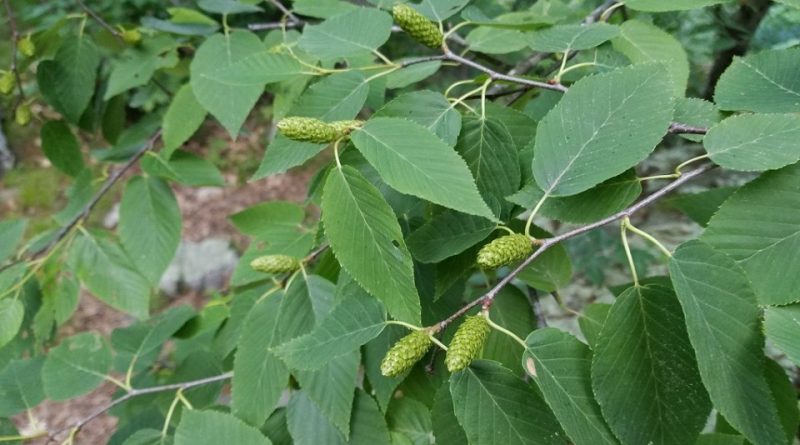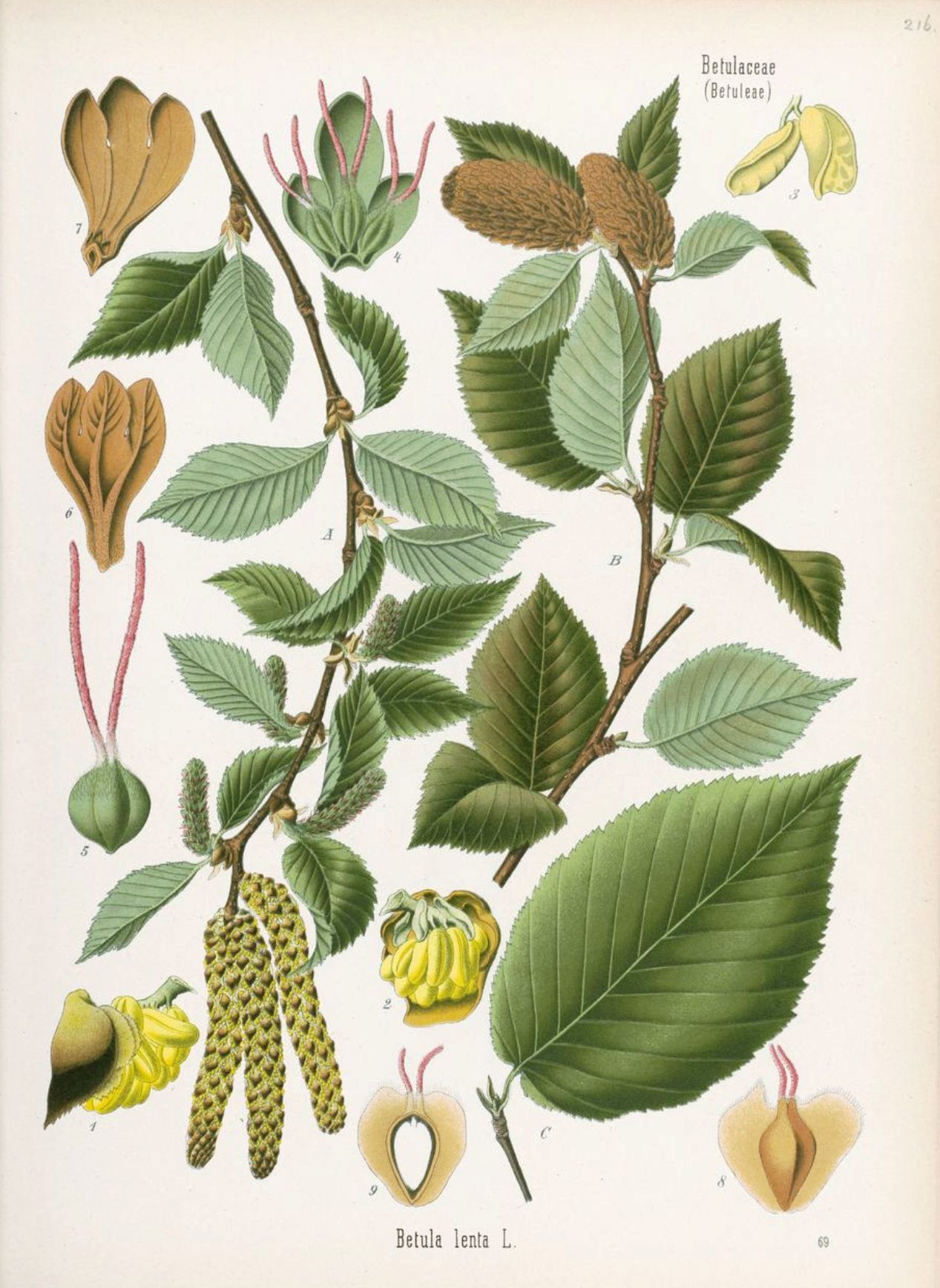Betula lenta
Betula lenta
Sweet birch (Betula lenta L.) is an arboreal species belonging to the Betulaceae family.
Systematic –
From a systematic point of view it belongs to the Eukaryota Domain, the Plantae Kingdom, the Magnoliophyta Division, the Magnoliopsida Class, the Fagales Order, the Betulaceae Family and therefore to the Genus Betula and to the species B. lenta.
Etymology –
The term Betula comes from betula, the classic name of the Pliny birch, deriving from the Gallic betw or betu.
The specific slow epithet comes from making it curved, bending: curved, flexible.
Geographical Distribution and Habitat –
Sweet Birch is a species native to the eastern part of North America, with an area that runs from southern western Maine, southern Ontario and south of the Appalachian Mountains north of Georgia.
Its habitat is that of the areas of which it originates on humid and well-drained forest slopes and often positioned in rocky and rocky areas.
Description –
Betula lenta is a medium-sized deciduous tree that reaches a height of 30 m, exceptionally 35 meters.
The trunk can reach 60 cm in diameter.
In younger trees the bark is characteristic of most birches, with smooth bark and distinct horizontal lenticels. In the specimens of older trees the bark develops vertical cracks in irregular scaly plates revealing rough dark brown bark motifs. This occurs, however, only in mature or ancient trees and these specimens are often not identified by the less experienced as B. lenta due to the difference between the smooth and young bark of the tree and the rough structure of the bark of the tree which it is cracked and plated.
Once scraped, the twigs have a strong scent due to methyl salicylate, which is produced in the bark.
The leaves are alternate, ovate, 5 to 10 cm long and 4 to 8 cm wide, with a finely serrated margin.
The female flowers are erect, pollinated by the wind, they are 3 to 6 cm long; male ones are pending.
The fruit, which ripens in autumn, is made up of numerous tiny winged seeds enclosed between the bracts.
Seed production occurs mainly in trees between the ages of 40 and 200, although it can start as early as 15 years and as long as the tree lives.
Cultivation –
Sweet birch is a pleasant-looking tree that can be used for residential areas and parks.
The plant requires exposure in full sun with preferably moist and well-drained soil.
It is a fairly tolerant plant to various types of soil but not very tolerant to salinity, drought and poor drainage.
It is also a plant sensitive to air pollution.
Uses and Traditions –
The oldest existing slow birch is 368 years old, although this plant can live even longer.
This plant, by means of its seeds, can quickly colonize many areas.
The wood of this birch is heavy and is used for furniture, milling and cabinets. It is similar to yellow birch wood and often does not stand out from it.
From the cuts, a sap is produced which can be boiled like maple sap, but its syrup is stronger (like molasses). It can be used to make birch beer.
The leaves of this species serve as food for some caterpillars and the solitary leaf-cutting bee (Megachile rubi Mitchell, 1924) uses pieces of the leaves to align the cells of its nest.
In addition, deer are not very interested in young Betula lenta plants, allowing trees to grow even in areas with a high population of deer.
Preparation method –
The bark, leaves and essential oils of this plant are used for therapeutic purposes or the sap can be used to produce very strong syrups.
Guido Bissanti
Sources
– Acta Plantarum – Flora of the Italian Regions.
– Wikipedia, the free encyclopedia.
– Treben M., 2000. Health from the Lord’s Pharmacy, Tips and experiences with medicinal herbs, Ennsthaler Editore
– Pignatti S., 1982. Flora of Italy, Edagricole, Bologna.
– Conti F., Abbate G., Alessandrini A., Blasi C. (edited by), 2005. An annotated checklist of the Italian vascular flora, Palombi Editore.
Warning: Pharmaceutical applications and alimurgical uses are indicated for information purposes only, they do not in any way represent a medical prescription; therefore, no responsibility is accepted for their use for healing, aesthetic or food purposes.


